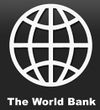Stephen Moses
Stephen Moses, Professor, Departments of Medical Microbiology, Community Health Sciences and Medicine. Stephen Moses has been a circumcision proponent since at least 1994.[1] Moses (along with Robert C. Bailey) was responsible for one of the three major African circumcision trials (funded by NIAID and the Canadian Institutes of Health Research)[2] which are being used by the World Health Organization (under the guide of UNAIDS) to endorse circumcision as an HIV prevention method.[3]

|
| Stephen Moses |
| Associates With: |
| Gilgal Society Circlist |
| Colleagues & Benefactors: |
| Daniel T. Halperin Edgar J. Schoen Robert C. Bailey Bertran Auvert Maria J. Wawer Brian J. Morris |
Contents
Interests
According to Stephen's bio, his interest is in biological and behavioural risk factors for STI/HIV transmission.[4] Moses has been an advocate of circumcision since at least 1994.[1]
RCT in Kenya
Three trials were funded by the American National Institutes of Health.[5]Of the three RCTs being used by the WHO to endorse circumcision as HIV prevention, Stephen Moses and Robert C. Bailey headed the RCT that was carried out in Kenya.[6] Moses obviously brought his pre-existing bias in favor of male circumcision into the trial, so he did not start from a neutral position.
Boyle & Hill (2011) reviewed the three randomized controlled trials (RCTs) and found disabling methodological and statistical errors in all three. Although a 60 percent relative reduction in HIV was claimed, the absolute reduction was a statistically insignificant 1.3 percent.[7]
Active projects
- A randomized, controlled trial of male circumcision to reduce HIV incidence in Kisumu, Kenya.[4]
National Institutes of Health. - Scaling up HIV prevention in Karnataka and southern Maharashtra, Phase II.[4]
Bill & Melinda Gates Foundation. - Monitoring and evaluation of the Avahan project in India.[4]
Bill & Melinda Gates Foundation. - Technical assistance to improve maternal, neonatal & child health through National Rural Health Mission, India.[4]
Bill & Melinda Gates Foundation. - Mapping key populations for HIV prevention in Sri Lanka.[4]
World Bank.
Recent publications
- Prevalence and risk factors for human papillomavirus infection by penile site in uncircumcised Kenyan men.[8]
Smith JS, Hudgens MG, Bailey RC, Agot K, Ndinya-Achola JO, Moses S, et al. Int J Cancer 2010; 126: 572-7. - Top Achievements in Health Research: Male circumcision: a new approach to reducing HIV transmission.[9]
Moses S. CIHR/CMAJ 2009; 181: E134-5. - Does sex in the early period after circumcision increase HIV-seroconversion risk? Pooled analysis of adult male circumcision clinical trials.[10]
Mehta SD, Gray RH, Auvert B, Moses S , Kigozi G, Taljaard D, Puren A, Agot K, Serwadda D, Parker CB, Wawer MJ, Bailey RC. AIDS 2009; 23: 1557-64. - Male circumcision for HIV prevention in young men in Kisumu, Kenya: a randomised controlled trial.[11]
Bailey RC, Moses S , Parker CB, Agot K, Maclean I, Krieger JN, et al. Lancet 2007; 369: 643-56. - Modelling the public health impact of male circumcision for HIV prevention in high prevalence areas in Africa.[12]
Nagelkerke NJD, Moses S, de Vlas S, Bailey RC. BMC Infect Dis 2007; 7: 16. - Adult male circumcision outcomes: experience in a developing country setting.[13]
Krieger J, Bailey RC, Agot K, Parker C, Ndinya-Achola JO, Moses S, et al. Urol Int 2007; 78: 235-40.
See also
References
- ↑ a b Moses, S., Bradley, J.E., Ndinya-Achola, J.O., Nagelkerke, N.J., Ronald, A.R.. The association between lack of male circumcision and risk for HIV infection: a review of the epidemiological data. Sex Transm Dis. 1994; 21: 201-210.
- ↑ Krieger, J.N., Bailey, R.C., Opeya, J., et al. Adult male circumcision: results of a standardized procedure in Kisumu District, Kenya. BJU Int.. November 2005; 96(7): 1109–13. PMID. DOI.
- ↑ World Health Organization (27 March 2007).
WHO and UNAIDS announce recommendations from expert consultation on male circumcision for HIV prevention
. Retrieved 23 February 2011. - ↑ a b c d e f Dr. Moses, Stephen. [<title> parameter missing!, University of Manitoba. Retrieved 23 February 2011.
- ↑ (2016).
HIV/AIDS
, Doctors Opposing Circumcision. Retrieved 23 March 2020.
Quote:...funding from the United States National Institutes of Health to conduct randomized controlled trials (RCTs) in Africa.
- ↑ Bailey RC, Moses S, Parker CB, et al. Male circumcision for HIV prevention in young men in Kisumu, Kenya: a randomised controlled trial. Lancet 2007;369:643-56. Abstract
- ↑ Boyle, Gregory J., Hill, George. Sub-Saharan African randomised clinical trials into male circumcision and HIV transmission: Methodological, ethical and legal concerns. J Law Med. December 2011; 19(2): 316-334. PMID. Retrieved 23 March 2020.
- ↑ Smith, J.S., Backes, D.M., Hudgens, M.G., et al. Prevalence and risk factors of human papillomavirus infection by penile site in uncircumcised Kenyan men. Int. J. Cancer. January 2010; 126(2): 572–7. PMID. PMC. DOI.
- ↑ Moses, S.. Male circumcision: a new approach to reducing HIV transmission. CMAJ. October 2009; 181(8): E134–5. PMID. PMC. DOI.
- ↑ Mehta, S.D., Gray, R.H., Auvert, B., et al. Does sex in the early period after circumcision increase HIV-seroconversion risk? Pooled analysis of adult male circumcision clinical trials. AIDS. July 2007; 23(12): 1557–64. PMID. PMC. DOI.
- ↑ Bailey, R.C., Moses, S., Parker, C.B., et al. Male circumcision for HIV prevention in young men in Kisumu, Kenya: a randomised controlled trial. Lancet. February 2007; 369(9562): 643–56. PMID. DOI.
- ↑ Nagelkerke, N.J., Moses, S., de Vlas, S.J., Bailey, R.C.. Modelling the public health impact of male circumcision for HIV prevention in high prevalence areas in Africa. BMC Infect. Dis.. 2007; 7: 16. PMID. PMC. DOI.
- ↑ Krieger, J.N., Bailey, R.C., Opeya, J.C., et al. Adult male circumcision outcomes: experience in a developing country setting. Urol. Int.. 2007; 78(3): 235–40. PMID. DOI.

